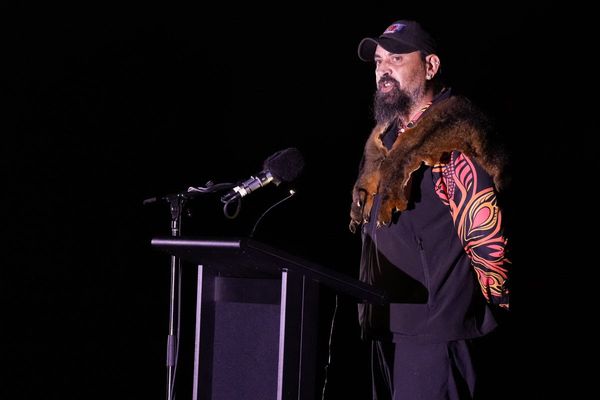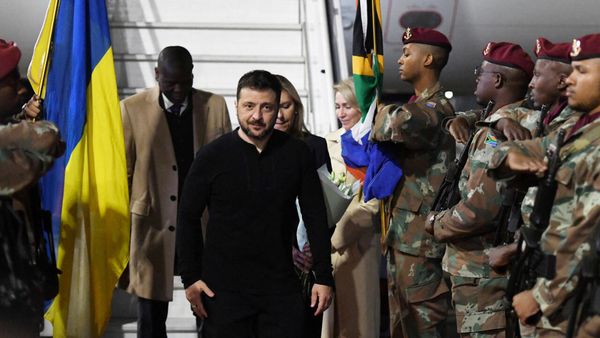
Police believed Anne Geeves was the “mastermind” in the murder of Amber Haigh, who was exploited to bear a baby for Anne and her husband before being killed, the New South Wales supreme court has heard.
Haigh was 19 when she vanished without trace from the NSW Riverina in June 2002, leaving behind her five-month-old son.
The father of Haigh’s child, 64-year-old Robert Geeves, and his wife, Anne Geeves, also 64, are on trial for her murder. Both have pleaded not guilty.
Retired police sergeant Gaetano Crea, the detective in charge of the investigation into Haigh’s disappearance, told the court on Tuesday morning he regarded the case as a potential murder almost “from the outset”.
“It came to light the whole thing revolves around the child. Mrs Geeves couldn’t conceive a child, she did have four miscarriages and a stillborn.
“The whole basis of Mr Geeves having a sexual relationship with Amber was to extract a child from her, and keep the child.”
He told the court he believed “Anne Geeves was the mastermind”.
Also Tuesday, the court heard the investigation into Haigh’s disappearance was hampered by police failures and the delay in reporting her missing.
Robert Geeves did not report Haigh missing until 19 June 2002, 14 days after he claims he and his wife drove Haigh from Kingsvale in the Riverina to Campbelltown railway station on the outskirts of Sydney, so that Haigh could catch a train to visit her dying father in hospital.
By the time Haigh was reported missing, CCTV footage from the railway station – which would have proved or disproved her presence at the station – had been wiped. Similarly, CCTV footage from the street where money was withdrawn from Haigh’s account on the evening of 5 June, had been erased.
Robert and Anne Geeves were both interviewed by police on 18 July 2002. While they were at Young police station, investigators placed listening devices in their car and home.
But the devices were badly installed – one was placed next to a microwave – so the sound was distorted and unintelligible. Crea told the court that “it hindered our investigation quite a lot”.
“The installation of the devices was not a very good one. There were a number of conversations that could be heard, but there were a lot more that were distorted.
“The main listening device was placed near the microwave and that interfered with the collection of conversation through that device.”
The whole purpose of putting in a listening device is to gather information, whether it’s incriminating or not. The evidence that comes from a listening device could well exculpate them.”
Crea also told the court the police investigation was hampered because “we were grossly understaffed”.
Crea testified police began treating Haigh’s disappearance as a potential murder investigation almost “from the outset”, because of its unique circumstance.
“When you look into the circumstances of how she came to be where she was at the time: she was a young, vulnerable, intellectually disabled woman who was easily led.
“She … was manipulated into having a sexual relationship with a married, older man. That sexual relationship continued until they had a child, this relationship was … [in] the house with his wife.”
Crea said he was concerned by Robert Geeves’s criminal history, which was uncovered during the police investigation.
He told the court that Geeves had been charged with murder in 1993 after his then-girlfriend Janelle Goodwin had been killed during an alleged drunken fight, “shot through the nose and killed in a struggle with a gun”.
Crea told the court Geeves put a plastic bag over Goodwin’s head, covered her body in a sheet and tied it up.
“The crime scene was washed down … he put the body in a shed … in a wheelbarrow and left it there for two days and then decided to report it to police as an accident.”
Geeves was discharged at committal, then re-charged with murder, before being acquitted at trial.
Crea told the court Geeves was also charged with sexual offences over two 13-year-old schoolgirls who had disappeared in 1986 and were discovered weeks later at Geeves’s property.
Geeves was acquitted on those charges.
Crea also said he was concerned by the alleged circumstances of Haigh’s last sighting.
Robert and Anne Geeves told police they drove Haigh the three hours from Kingsvale to Campbelltown, but dropped her at a railway station, with no plan to meet anybody or as to where she would stay.
He questioned why the Geeveses – having driven three hours – did not take Haigh the short remaining distance to the hospital.
“The distance from Campbelltown to Mt Druitt, would be 15 minutes, 20 minutes.”
Crea also told the court the department of community services (Docs) was obstructive towards the police investigation. Docs, he told the court, refused to give him information about the Geeveses, and refused to remove Haigh’s child from the Geeveses’ custody. Officers ultimately used police powers to have a court order the infant’s removal.
“I found them [Docs] to be uncooperative … to the point where they were obstructing my attempts to navigate what I was doing.”
Under cross-examination, Crea rejected assertions from defence counsel he was fixated on Robert Geeves and that his investigation lacked objectivity.
Paul Coady, acting for Robert Geeves, asked: “can I suggest you had a vendetta against Robert Geeves?”.
“I didn’t know him from a bar of soap,” Crea said.
“My objective was to find a missing person.”
Coady asked: “would you agree that what you believed to be Mr Geeves’s past, a belief that Mr Geeves had wrongly escaped conviction in relation to the 13-year-old girls, that he had wrongly escaped conviction in relation to Janelle Goodwin, that this clouded your investigation at all?
“No,” Crea replied.
Haigh’s unresolved disappearance has been an enduring mystery in NSW’s Riverina, where she was last seen alive more than two decades ago. She left behind a five-month-old son who the court has heard she “adored” and “never let out of her sight”.
Haigh’s body has never been found, but a coroner has ruled she died from “homicide or misadventure”.
The prosecution has alleged in court that Haigh was used by Robert and Anne Geeves as a “surrogate mother” because they wanted another baby.
The court has previously heard the Geeveses had had one child together – a son the same age as Haigh, who had previously dated her – but the couple wanted more children.
“The crown case theory is that it was always the intention of the Geeveses to assume the custody and care of [the child] from Amber, but they knew that to do that, Amber had to be removed from the equation … so, the crown asserts, they killed her,” crown prosecutor Paul Kerr said.
Lawyers for Robert and Anne Geeves have argued the case against the couple – now more than two decades old – was deeply flawed, arguing that “community distaste” at Robert Geeves’ relationship with “a much younger woman with intellectual disabilities” fuelled “gossip and innuendo”.
“Everything they did was viewed through a haze of mistrust and suspicion,” the court has heard.
The judge-alone trial, before justice Julia Lonergan, continues in Wagga Wagga.







